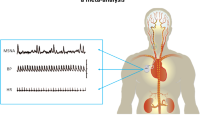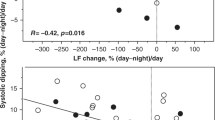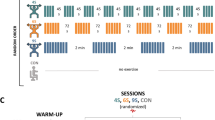Abstract
ABSTRACT: Muscle contraction produces a reflex increase in blood pressure, heart rate, and minute ventilation in adults. To evaluate the role of this reflex in newborns, we compared the blood pressure, heart rate, and ventilatory responses to static contraction of the hindlimb muscles in sedated newborn and adult felines. The reflex response to muscle contraction was compared with the baroreflex, the chemoreceptor reflex, and the response to maximal stimulation of sciatic nerve afferents. With muscle contraction, newborn systolic blood pressure increased by 8.5 ± 2.6%, which was significantly less than the adult response of 15.9 ± 1.8% (p < 0.025). Heart rate response to muscle contraction was less in newborns compared with adults, increasing by 1.4 ± 0.5 and 8.3 ± 1.3%, respectively (p < 0.025). In contrast to heart-rate and blood-pressure responses, ventilatory responses to muscle contraction were similar in both age groups, increasing by 34 ± 20 and 34 ± 10% in newborns and adults, respectively. With stimulation of sciatic nerve afferents and with hypoxemia, blood pressure and heart rate increased similarly in both newborns and adults. When the baroreflex was elicited, heart rate decreased similarly in both age groups. We conclude that newborn cats have a reduced heart rate and blood pressure response to muscle contraction compared with the adult. We speculate that the postnatal development of this reflex is due to maturation of integrative and modulatory mechanisms in the CNS.
Similar content being viewed by others
Log in or create a free account to read this content
Gain free access to this article, as well as selected content from this journal and more on nature.com
or
Author information
Authors and Affiliations
Rights and permissions
About this article
Cite this article
Parrish, M., Hill, J. & Kaufman, M. Cardiovascular and Respiratory Response to Static Exercise in the Newborn Kitten. Pediatr Res 30, 95–99 (1991). https://doi.org/10.1203/00006450-199107000-00019
Received:
Accepted:
Issue date:
DOI: https://doi.org/10.1203/00006450-199107000-00019



